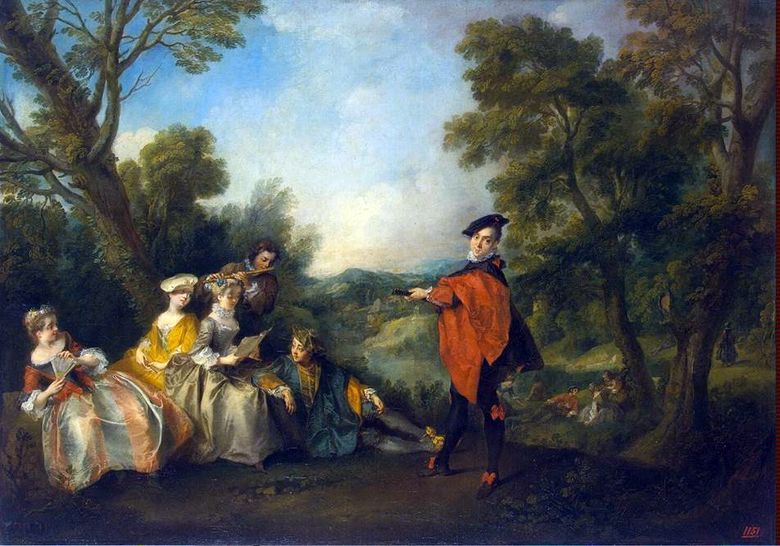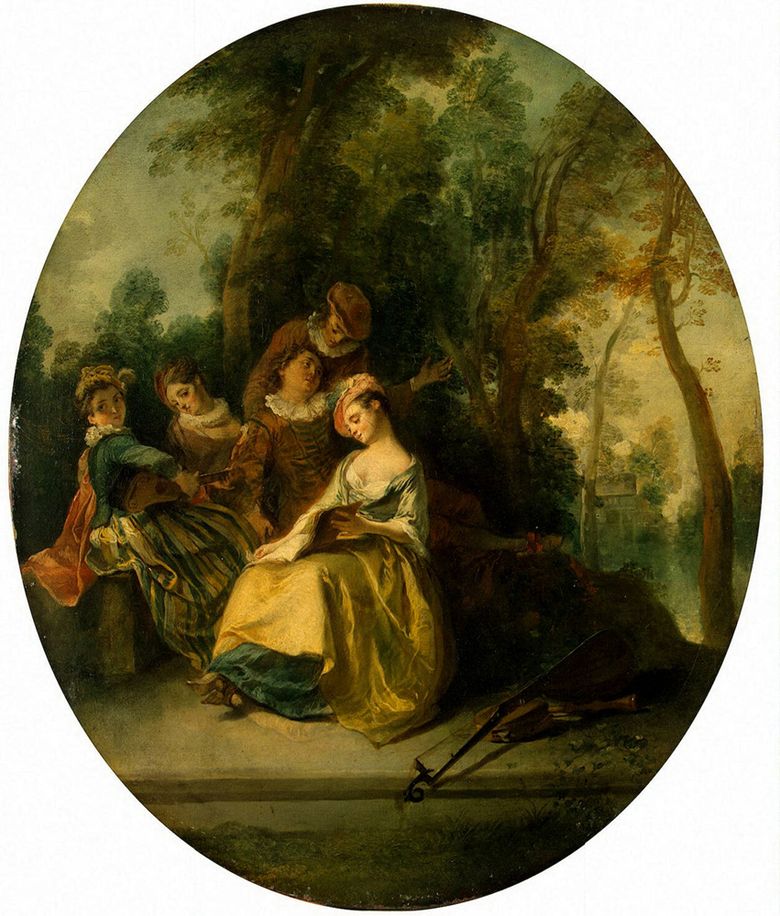
Painting by the French painter Nicolas Lancre “Concert in the park”. The size of the painting is 76 x 107 cm, oil on canvas. A concert is a public meeting in which a number of vocal or instrumental works are performed.
According to the program, the concert receives the name: symphonic, spiritual or sometimes historical. A concert is a musical composition written for one or several instruments, with the accompaniment of an orchestra, with the aim of enabling the soloists to demonstrate the virtuosity of the performance. The concert, written for 2 instruments, is called double, for 3 instruments – triple.
In such concerts, the orchestra is of secondary importance and it gains independent significance only in playing. A concert in which the orchestra has great symphonic significance is called symphonic. A concert usually consists of 3 parts. In the 18th century, the symphony in which many instruments performed solo in some places was called concerto grosso. Later, the symphony, in which one instrument received a more independent meaning in comparison with others, was called symphonique concertante, concertirende Sinfonie.
The word concert, as the name of a musical composition, appeared in Italy at the end of the 16th century. The concert in three parts appeared at the end of the 17th century. The Italian Corelli is considered the founder of this form of the concert, from which concerts for various instruments developed in the 18th and 19th centuries. The most popular violin, cello and piano concerts. Later, the concerts were written by Bach, Mozart, Beethoven, Schumann, Mendelssohn, Tchaikovsky, Davydov, Rubinstein, Viotti, Paganini, Vietan, Bruch, Wieniawski, Ernst, Servae, Litolf and others. A small concert in which parts are merged is called concertino. The concert is also called the Academy, where the performers, both solo and in the orchestra, are first-class artists.
 Concert dans le parc – Nicola Lancre
Concert dans le parc – Nicola Lancre Concert in the lap of nature by Nicola Lancre
Concert in the lap of nature by Nicola Lancre Minuet by Nicola Lancre
Minuet by Nicola Lancre Society in the park by Nicola Lancre
Society in the park by Nicola Lancre Concert au cœur de la nature – Nicola Lancre
Concert au cœur de la nature – Nicola Lancre Pavilion Dance by Nicola Lancre
Pavilion Dance by Nicola Lancre Camargo Dancer by Nicola Lancre
Camargo Dancer by Nicola Lancre Concert in the egg by Hieronymus Bosch
Concert in the egg by Hieronymus Bosch